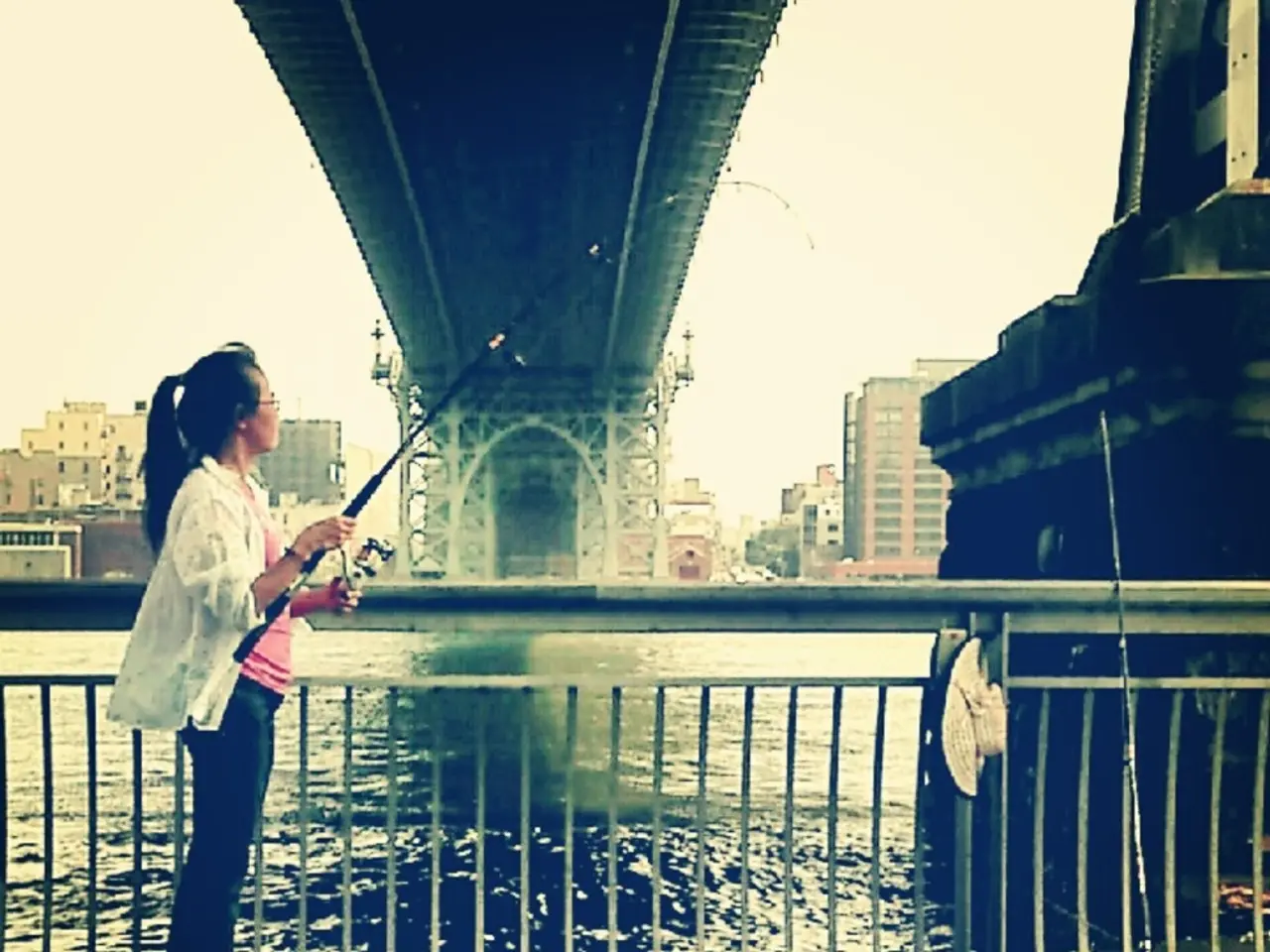Necessary Equipment for an Efficient Fly Fishing Excursion
For those seeking an exciting outdoor adventure, a fly fishing trip can be an unforgettable experience. Whether you're a seasoned angler or a beginner, selecting the right gear tailored to your fishing style and location is essential for a successful and enjoyable outing. Here are key tips covering fly rods, reels, fly lines, flies, additional gear, and tech gear to help you prepare for your next fly fishing trip.
**Fly Rods**
When choosing a fly rod, consider your fishing technique and target species. For general trout or bass fishing, a 5-weight or 6-weight rod around 9 feet long is versatile and beginner-friendly. For heavier fish like barramundi or saltwater species, use an 8-weight rod or higher.
The type of fly fishing you’ll do also plays a role in your rod selection. Nymphing benefits from longer rods for better line control, while dry fly fishing usually works well with 9-foot rods for subtle presentations. Streamer fishing calls for fast-action, strong-backbone rods to handle heavier flies effectively.
**Fly Reels**
Match the reel size and drag system to your rod and fishing environment. A smooth drag system is critical, and for saltwater, reels with a sealed drag are essential to prevent corrosion. Ensure your reel balances well with your rod for comfort and efficiency.
**Fly Lines**
Use weight-forward floating lines (e.g., WF5F for a 5-weight rod) for beginner-friendly handling and effective casting. Match the line weight precisely to your rod specifications. In tropical or saltwater environments, consider specialized lines suited for those conditions.
**Flies**
Build a basic selection relevant to local species and environments. Common Australian selections include nymphs (e.g., Beadhead Pheasant Tail, Hare’s Ear), dry flies (e.g., Elk Hair Caddis, Parachute Adams), and streamers (e.g., Woolly Bugger, Clouser Minnow). Seek local fly fishing advice for specific patterns and seasonal preferences.
**Additional Gear**
Bring at least two complete rod and reel setups to avoid interruptions from equipment failure. Maintain a well-organized tackle box with assorted flies, hooks, lines, and terminal tackle. Essential accessories include pliers, line cutters, a landing net or lip gripper, and fish-handling gloves to protect both you and the fish.
Dress appropriately with waders, wading boots, and layered clothing to stay comfortable and safe in variable weather conditions. A fishing vest is beneficial for carrying tools, flies, and snacks.
**Tech Gear**
While not detailed explicitly in the search results, tech gear such as GPS devices, fish finders, or mobile apps for fishing forecasts can enhance your trip by helping with navigation, fish location, and weather updates. Use apps or digital tools for local fly selection advice, casting tutorials, and fishing regulations.
In summary, choosing the right gear is crucial for a successful and enjoyable fly fishing trip. Prioritize comfortable, balanced, and well-matched rod, reel, and line combos. Supplement with a smart assortment of flies and essential accessories, and consider tech tools for planning and enhancing your experience. A well-organized fly box keeps your flies accessible and ready to use, while a quality hat shields you from the sun, making your experience more enjoyable and safe. High-quality fly reels do not always have to be expensive; budget-friendly options exist that perform well. Don't forget essential clothing items like polarized sunglasses to reduce glare and improve visibility underwater.
[1] https://www.flyfishing.co.uk/ [2] https://www.orvis.com/ [3] https://www.simmsfishing.com/ [4] https://www.riogrande.com/ [5] https://www.scientificanglers.com/
- For those interested in exploring diverse fishing species, it's important to select flies that are relevant to local species and environments, such as nymphs, dry flies, and streamers, and to seek advice from local fly fishing experts for specific patterns and seasonal preferences.
- To fully immerse yourself in the world of sports fishing, consider incorporating tech gear like GPS devices, fish finders, or mobile apps into your gear, as they can aid in navigation, fish location, and weather updates, making your fly fishing experience more successful and enjoyable.





